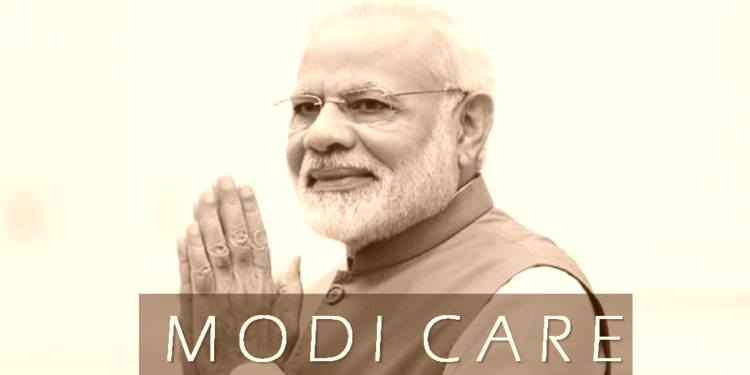Within one month of launch of the Pradhan Mantri Jan Aarogya Yojna (PMJAY), more than one lakh people have benefited from the scheme. PM Modi launched the health insurance scheme on September 23, in Jharkhand. “Prime Minister Narendra Modi @narendramodi launched Pradhan Mantri Jan Arogya Yojana on September 23 and within a month, one lakh beneficiaries have benefitted from it. We are committed to ensure the benefits of the scheme reach the last man,” wrote union health minister JP Nadda in an article in Hindustan Times. The scheme benefitted such a large number of people within a month of implementation because of the efficient implementation of the scheme. Any policy is finally as good as its execution and Modi led government has mastered the art of execution which was biggest problem for previous governments. “32 states and Union Territories have joined Ayushman Bharat and we have given benefits in all the regions and to the marginalised sections of the society. We need your cooperation and stakeholders’ cooperation to make the programme successful. It is entirely paperless and cashless. The programme has now stabilized. We are trying to implement the Prime Minister’s wish so that we can reach the last person who needs this benefit and we are able to give it,” added Nadda.
Modi government launched Ayushman Bharat scheme on September 23 from Jharkhand. Under the scheme, Modi government will provide 5 lakh health insurance cover to 50 crore people, which is nearly 40 percent of the population of the country. Besides the insurance cover, the government will create 1, 50,000 wellness centers across the country under the Ayushman Bharat scheme. The wellness centers which include Sub-centres, Primary Health Centers (PHC) and Community health centers (CHC) are the first line of contact for primary health care for the citizens of the country. The families which will benefit from the scheme will be identified from Socio-economic and caste census (SECC), 2011 data. This is the largest public health insurance scheme in the world.
Many experts hailed it as one of the most ambitious and most efficient schemes in the world. “The prime minister has grasped the importance of health not only as a natural right of citizens, but also as a political instrument to meet the growing expectations of India’s emerging middle class,” said Richard Horton, editor-in-chief of the ‘The Lancet’. The experts also hope that if the scheme succeeds in India, it could provide a blueprint to low income countries for universal healthcare. On the very first day of launch of Ayushman Bharat scheme, more than a thousand patients benefitted. The access to scheme is very easy for the people because no enrollment is required to avail benefits of the scheme. The beneficiary are identified through SECC, 2011 data therefore enrollment is not required.
As of now, only four states– Kerala, Telangana, Odisha, and Delhi have kept themselves out of the ambitious healthcare insurance scheme. These states gave many reasons for not implementing the scheme. However, experts suggested that these states kept themselves out due to political reasons. According to the draft of National Health Policy, “Over 63 million people are faced with poverty every year due to healthcare costs alone. It is because there is no financial protection for the vast majority of healthcare needs.” The poor and needy have to sell their assets like jewelry in order to get quality healthcare, or land up borrowing money from Sahukars who levy heavy interests. The share of non regular expenditure on healthcare as a proportion of total household monthly per capita expenditure is 6.9 percent in rural areas and 5.5 percent in urban areas. The situation is same in other countries of South Asia like Pakistan, Bangladesh and countries in Sub-Saharan Africa. Basically Ayushman Bharat’s success could provide a template to all countries with similar per capita GDP to provide Universal healthcare. If this happens Ayushman Bharat will not be only a service to country but to humanity around the world.































